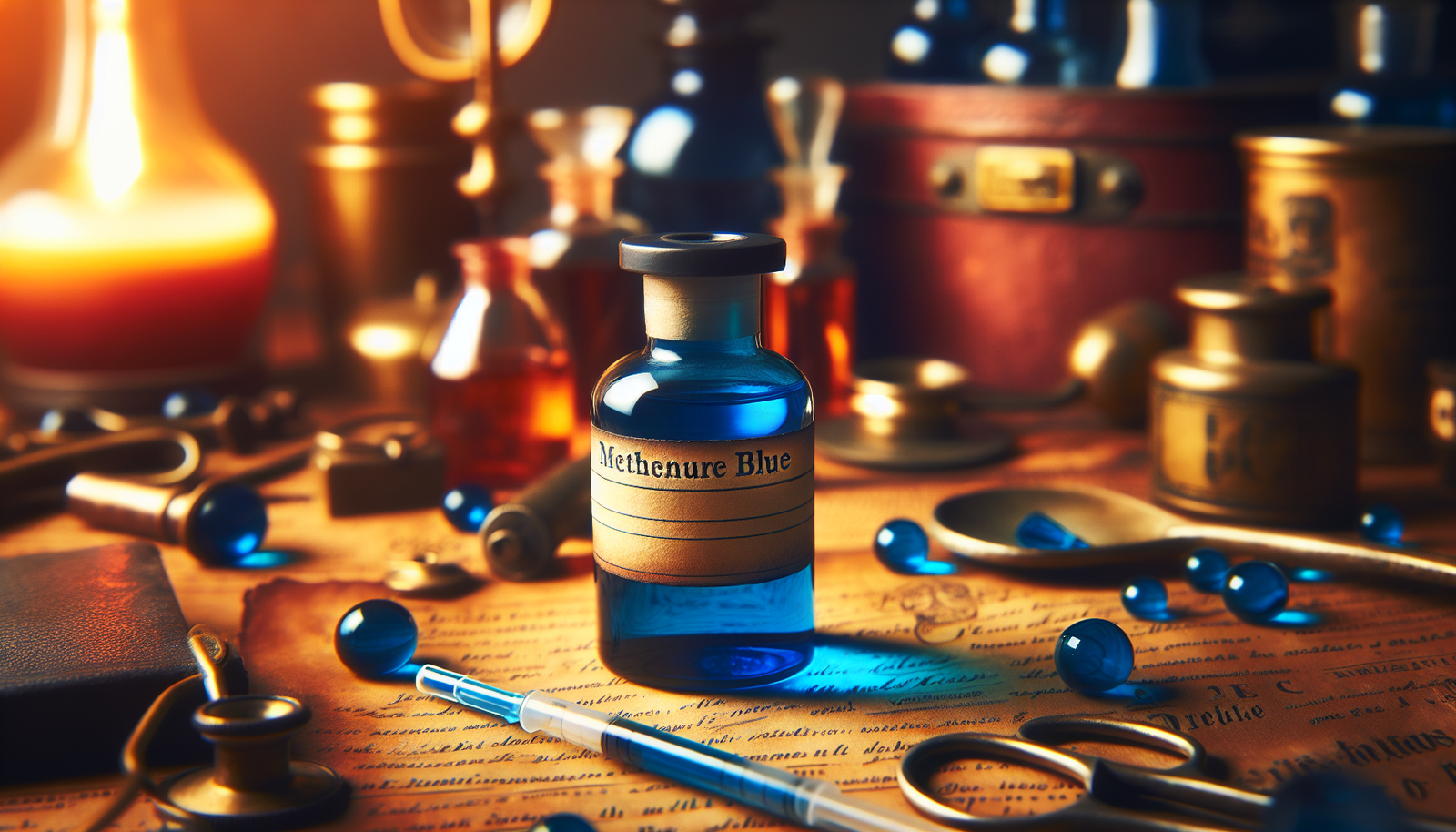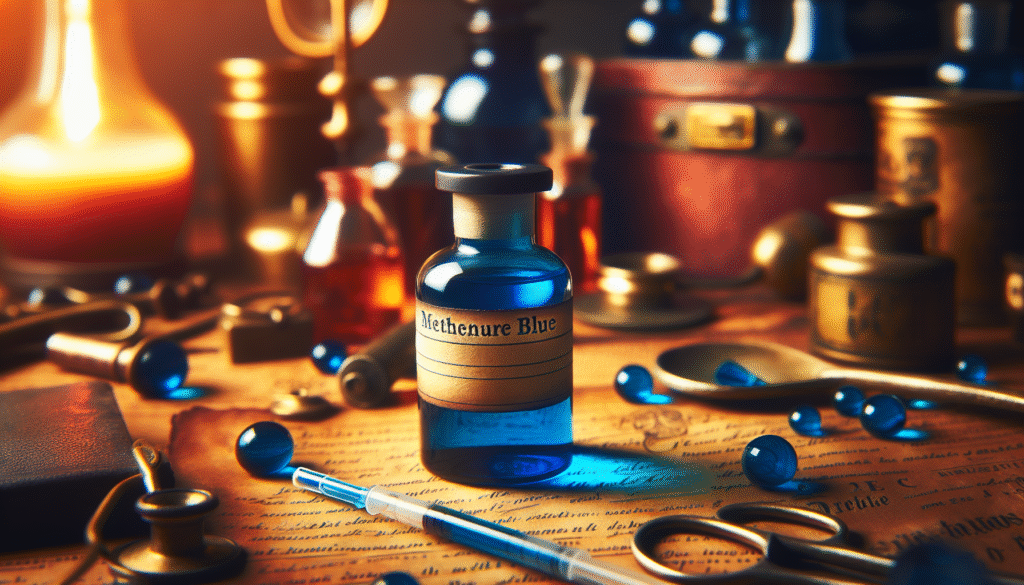
What role does Methylene Blue play in medicine and how might it contribute to longevity? Understanding the historical context and potential benefits of this compound can provide valuable insights into its significance in contemporary health practices.

Historical Background of Methylene Blue
Methylene Blue was first synthesized in 1876, primarily as a dye for textiles. It later became recognized for its medicinal properties. Originally developed for its vibrant coloration, it transitioned into a therapeutic agent within a few years, marking the beginning of its intriguing journey through medical history.
Early Medical Applications
In the late 19th century, French physician and bacteriologist Paul Ehrlich began experimenting with Methylene Blue for its potential role in treating various ailments, particularly as an antimicrobial and antimalarial agent. Methylene Blue was initially used to treat malaria, reflecting the increasing interest in targeting infectious diseases.
The Rise as a Treatment for Methemoglobinemia
One of the earliest notable uses of Methylene Blue in medicine was its application in treating methemoglobinemia—a condition where hemoglobin is unable to effectively release oxygen to body tissues. The compound has the unique ability to reduce methemoglobin back to hemoglobin, thereby restoring oxygen transport in the blood.
Methylene Blue in the Twentieth Century
Throughout the 20th century, Methylene Blue continued evolving as a medicinal tool. It was used not only as a treatment for methemoglobinemia but also gained traction in the fields of psychiatry and neurology. For example, during World War I, it was utilized as a dye for various diagnostic purposes, and later, studies suggested its potential benefits in improving memory and cognitive function.
Mechanisms of Action
Understanding how Methylene Blue works in the body is crucial to appreciate its potential contributions to longevity.
Cellular Respiration and Energy Production
At a cellular level, Methylene Blue acts as an electron carrier. It facilitates the transfer of electrons in the mitochondrial respiratory chain, playing a vital role in ATP (adenosine triphosphate) production. ATP is the energy currency of the cell, essential for numerous biological processes. This electron transfer capability may help enhance cellular energy metabolism and efficiency, leading to improved overall function.
Antioxidant Properties
Methylene Blue also exhibits antioxidant properties. Antioxidants play an essential role in neutralizing free radicals—unstable molecules that can cause oxidative stress and damage cells. By mitigating oxidative stress, Methylene Blue may help promote longevity by contributing to cellular health and reducing the risk of age-related diseases.
Neuroprotective Effects
Research suggests that Methylene Blue may have neuroprotective effects, particularly concerning cognitive function. Its ability to improve mitochondrial function, reduce oxidative stress, and enhance overall cellular health points to potential benefits for brain health. The prospect of protecting neurons from degeneration could serve as a significant factor in promoting longevity.
Contemporary Uses of Methylene Blue
Though initially known for its textile dyeing capabilities, Methylene Blue has emerged as a critical component in various medical applications. Understanding its contemporary uses helps us recognize its multifaceted nature.
Modern-Day Medical Treatments
Today, Methylene Blue is employed across several medical disciplines. It is often used as a diagnostic dye in procedures like lymphangiography and sentinel lymph node mapping in cancer surgeries. These applications highlight its versatility in clinical settings.
Table 1: Modern Applications of Methylene Blue
| Application | Description |
|---|---|
| Antimicrobial treatment | Effective against certain bacterial infections |
| Antidote for methemoglobinemia | Reduces methemoglobin levels in the blood |
| Diagnostic agent | Used as a tracer in medical imaging procedures |
| Psychiatric uses | Studied for potential effects on mood and cognition |
Potential in Longevity Research
Recent studies have begun to explore the relationship between Methylene Blue and longevity. Promising findings have emerged from animal studies indicating that Methylene Blue may have a life-extending effect due to its influence on mitochondrial function and oxidative stress.
Use in Age-Related Conditions
There is a growing interest in the potential of Methylene Blue to address age-related conditions such as Alzheimer’s disease and cognitive decline. Some research suggests that by improving mitochondrial function and reducing oxidative stress, Methylene Blue could mitigate the effects of neurodegenerative diseases.
Safety and Side Effects
A comprehensive understanding of Methylene Blue would not be complete without discussing its safety profile and potential side effects.
Common Side Effects
While Methylene Blue is generally considered safe when administered properly, it is essential to be aware of potential side effects, which may include:
- Nausea
- Vomiting
- Confusion
- Anxiety (at higher doses)
Contraindications and Precautions
Certain populations should exercise caution when considering Methylene Blue. It is contraindicated in individuals who are pregnant or breastfeeding, as well as those with serotonergic medications, as it can lead to serotonin syndrome—a potentially life-threatening condition. Always consult a healthcare provider before starting any new treatment.

Future Research Directions
The exploration of Methylene Blue’s potential in promoting longevity is an exciting frontier. As research continues to unfold, several areas warrant attention.
Longevity and Age-Related Diseases
Ongoing research is focusing on the specific mechanisms by which Methylene Blue may counteract age-related diseases. Studies are investigating how it interacts with cellular aging processes and may help mitigate inflammation and oxidative damage.
Combination Therapies
Another promising approach involves assessing Methylene Blue’s effectiveness in combination with other treatments. Researchers are examining whether it can enhance the efficacy of existing therapies for conditions such as Alzheimer’s disease or cardiovascular health.
Methylene Blue in Anti-Aging Supplementation
As public interest in longevity and anti-aging solutions increases, Methylene Blue is garnering attention as a potential supplement for healthy aging. Future studies may explore optimal dosages and forms of administration to maximize its benefits in this context.
Conclusion
The historical significance of Methylene Blue in medicine is as profound as its contemporary applications. Its journey from a textile dye to a multifaceted medicinal compound reveals its potential contributions to longevity and overall health. As you stay informed about its evolving role in longevity research, it becomes increasingly imperative to approach any treatment, including Methylene Blue, with an awareness of its multifactorial effects, safety considerations, and the importance of evidence-based practice. The future of medical exploration may hold promising insights into not only understanding the aging process but also enhancing overall well-being, making Methylene Blue an exciting area for ongoing curiosity and investigation.
In your pursuit of knowledge regarding longevity and health, keep abreast of the latest scientific findings surrounding Methylene Blue and its potential benefits, always prioritizing a conversation with healthcare professionals regarding any novel treatments or supplements you may consider.